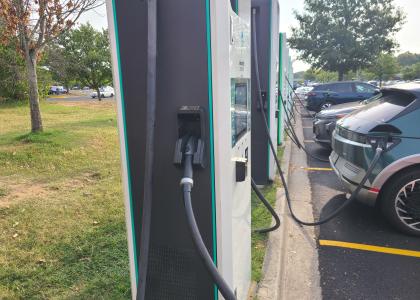The federal government’s plan to withdraw from the Paris Climate Accord galvanized many cities. Within hours of the announcement, 369 mayors signed on to the Mayors National Climate Action Agenda, which aims to uphold the US commitment to reduce greenhouse gas emissions (GHGs) under the Paris Agreement. So, what comes next for these cities? What strategies will they use to meet their commitments, and what role will energy efficiency play?
Energy efficiency can be a significant component of city plans to reduce greenhouse gas emissions. It is a cost-effective GHG reduction strategy, saving cities money while creating healthier communities. Today’s release of our updated Local Energy Efficiency Self-Scoring Tool provides cities of every size a resource to help them develop policy roadmaps to increase energy efficiency and reduce GHGs in the process.
Using energy efficiency to reduce emissions
Energy efficiency policies, programs, and technologies reduced annual carbon dioxide emissions by 490 million tons in 2015, an amount equivalent to the annual emissions from 129 coal-fired power plants. This reduction cost, at most, one-half of other resources such as wind, natural gas, and solar. Energy efficiency a cost-effective strategy for reducing emissions and can also stimulate local economic growth. About 1.9 million (full- and part-time) people were employed in the energy efficiency sector in 2015, almost ten times as many as the oil and gas industries.
Many cities already see energy efficiency as a core strategy to reduce emissions. Chicago recently announced that more energy-efficient buildings played a role in reducing community-wide GHG emissions by 7% within a five-year span. In New York City, 3,000 large buildings that were benchmarked consistently from 2010 to 2013 used six percent less energy, reducing greenhouse gas emissions by eight percent fewer. Some cities such as Pittsburgh are even calling out efficiency in their GHG reduction commitments in response to the Paris Agreement. The city recently reaffirmed one of its 2030 objectives to reduce energy consumption citywide through several energy efficiency initiatives.
Cities of all sizes can use the self-scoring tool to chart a path for efficiency
Cities are often leaders of innovation, and all communities, large and small, have the potential to lead. We have seen this in our 2017 City Scorecard, which evaluates large cities on their energy efficiency efforts. The scorecard helps us recognize leaders and helps cities identify opportunities to increase their efficiency. But we have also seen that innovation and leadership are not limited to large cities.
So today we’re giving all localities opportunities to evaluate their progress and determine next steps to increase their efficiency with the updated Local Energy Efficiency Self-Scoring Tool.
Scoring your community
Communities get their scores by answering multiple choice questions about energy efficiency efforts in local government operations, community-wide initiatives, buildings policies, energy and water utility policies, and transportation policies. Does your community have an energy savings goal or GHG reductions goal? How about a building energy benchmarking initiative? Answer all the questions, and your community gets an overall score, just like the cities in the Scorecard.
After completing the tool, your community can compare itself to the median score of the 51 cities evaluated in the City Scorecard to see where it stands. We have also embedded Arlington County’s and Oakland’s self-scoring tool results in the user guide, along with a discussion about their highlights for further comparison. If that’s not enough, you could work with and encourage other small-to-large cities in your state to complete the tool, which would provide you with a better apples-to-apples comparison and possibly, the beginning of a rivalry.
Submitting your results
If you score your community, we encourage you to return the results to us by sending the completed Self-Scoring Tool to cityscorecard@aceee.org. We will verify the data (time and resources permitting), and may even include policy information and scores for your community in the State and Local Policy Database. The database showcases the energy efficiency program and policy information for over 60 local jurisdictions.
As cities re-commit to GHG reductions, this tool can help communities of all sizes institutionalize energy efficiency into their efforts and chart a path forward.
DOWNLOAD THE SELF-SCORING TOOL



